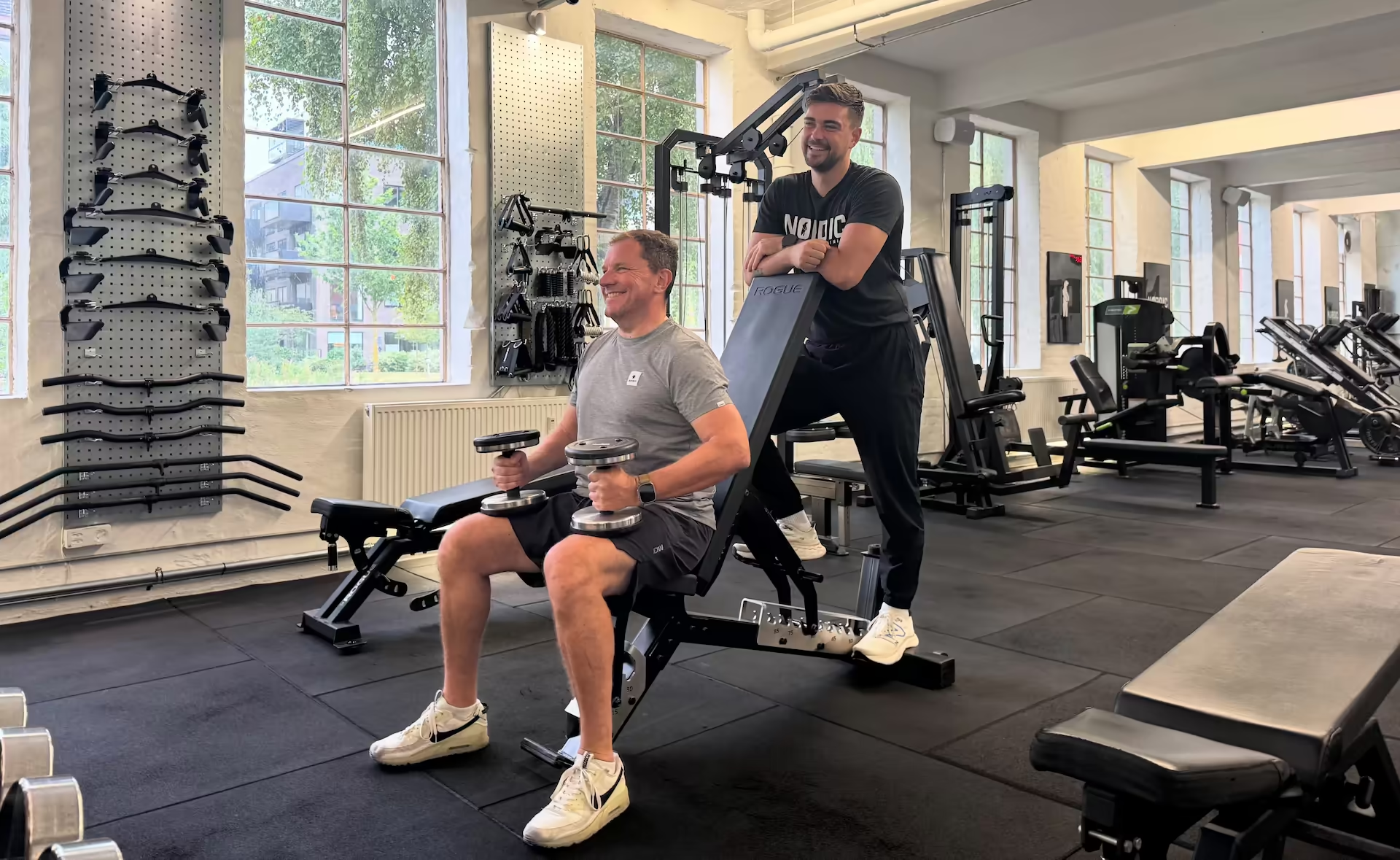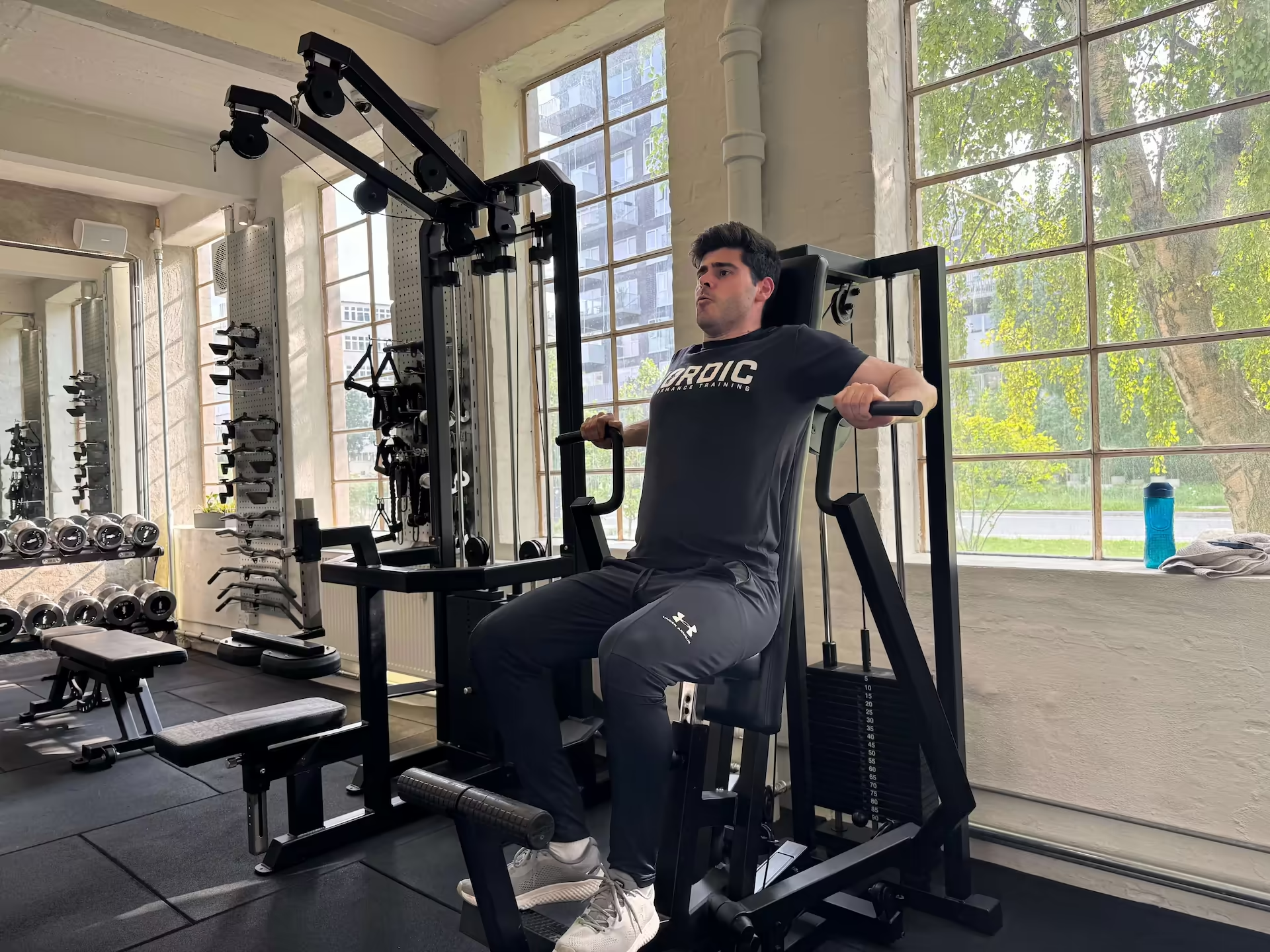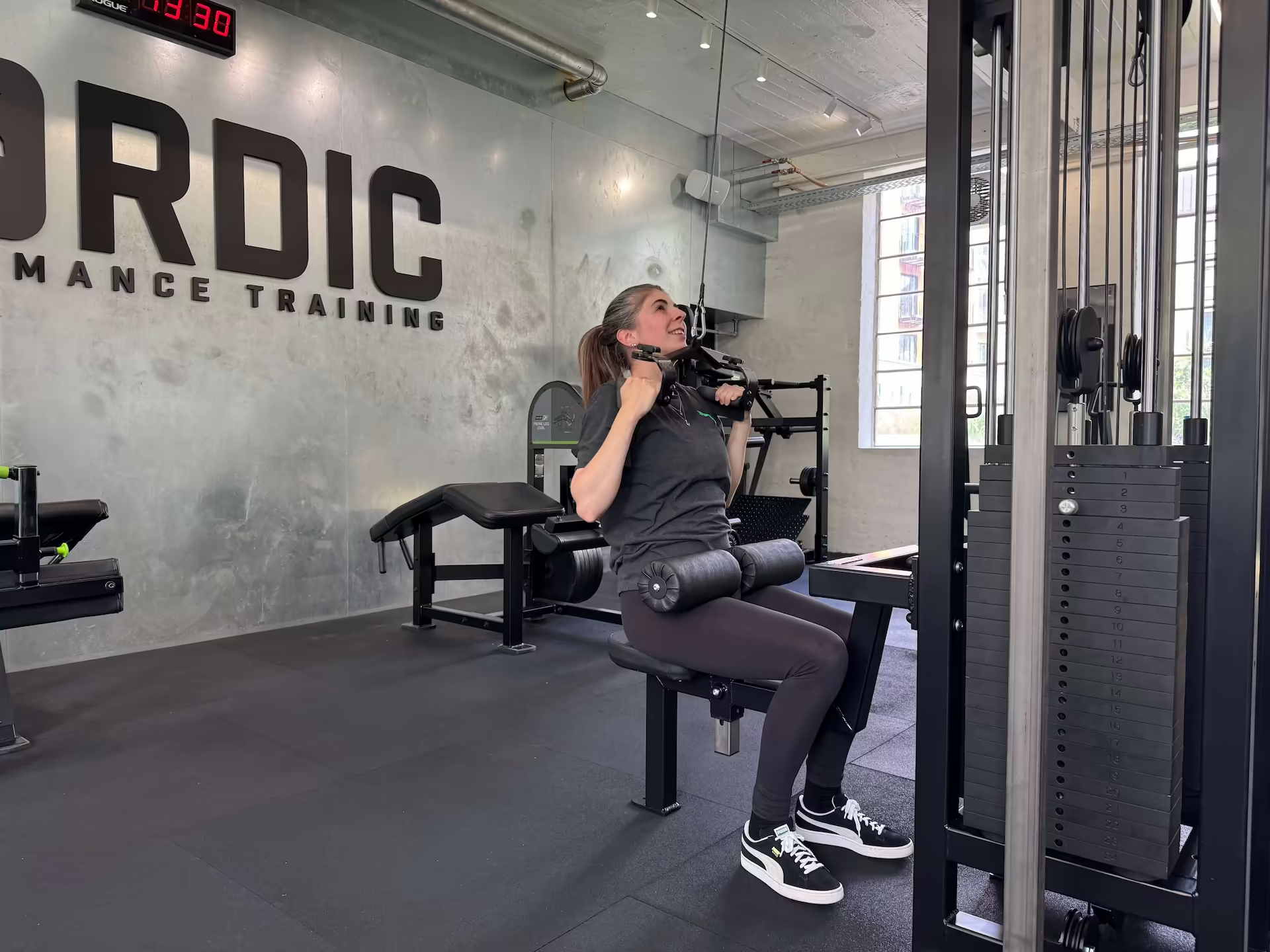Full Body vs Split Training: Which Gets Better Results?
Walk into most gyms and you'll see the same ritual: Monday chest day, Tuesday back day, Wednesday legs. It looks professional, sounds scientific, and mirrors what fitness influencers promote online.
But there's a problem with following advice designed for people whose lives look nothing like yours.
Our 10-year analysis of 3,000+ clients reveals the winner – and it's probably not what you think.
Most people believe that advanced lifters need complex training splits. Chest on Monday, back on Tuesday, legs on Wednesday. It sounds sophisticated, logical, and mirrors what bodybuilders do in magazines.
But after tracking 18 months of client progress data at Nordic Performance Training, we discovered something that challenges conventional wisdom: full body trainees showed 73% better long-term adherence and 45% faster strength gains compared to traditional split routines.
Not because full body training is magic, but because it works with human psychology and real schedules.
Why Split Routines Fail for Most People
The Rigid Schedule Problem
Split routines require perfect consistency. Miss chest day, and that muscle group goes untrained for 10+ days. Miss it twice, and you're looking at nearly three weeks without training your upper body.
The Complexity Tax
Split routines don't just require more gym days—they require perfect timing. Complex splits create decision fatigue and constant schedule juggling. You're not just planning workouts; you're playing Tetris with body parts.
The Psychology of "Being Behind"
This is the hidden weakness of split routines: they're psychologically fragile. When you miss a workout, you don't just miss training—you miss an entire muscle group. This creates anxiety and often leads to complete program abandonment.
How Full Body Training Wins

Maximum Efficiency, Maximum Flexibility
Every full body session covers everything. Miss a workout, and you've still trained your entire body recently. You're never behind, never scrambling to "make up" missed body parts.
Better Frequency, Better Results
Instead of training each muscle once per week (split routine), you're training each muscle 2-3 times per week. This higher frequency leads to:
- More practice with movement patterns
- Better skill development
- More frequent muscle protein synthesis stimulation
- Faster strength gains
The Recovery Advantage
Full body training distributes workload intelligently. Instead of overwhelming one muscle group, you're spreading the work across your entire body. This leads to better recovery and more consistent performance.
The Science: Why Your Brain Controls Your Gains
The CEO and Employees: How Your Brain Actually Controls Muscle Growth
When you do a set of squats, your brain doesn't recruit all the muscle fibers available to help with the movement.
Think of your muscles like a company with a clear hierarchy. At the top, you have the CEO (your brain) making decisions about what needs to get done. In the middle, you have different department managers (motor units) who each oversee their own teams. And at the ground level, you have the workers (muscle fibers) who do the actual work.
When your brain gets tired from long, high-volume sessions, it stops recruiting efficiently. You keep moving, but you're missing the muscle fibers that actually drive growth.
Your brain is like a CEO—when it's tired, it makes poor hiring decisions.
When Your Brain Gets Tired, Your Muscles Suffer
If you do 15 sets of chest exercises in one session, like many split routines recommend, something happens to your brain. It gets overwhelmed processing all the signals: heart rate spiking, muscles burning, coordination demands, breathing getting heavier.
Full body programs share the workload across different muscle groups. Instead of bombarding your brain with 20 sets of the same movement, you're switching between different patterns.
The Muscle Protein Synthesis Advantage
Why Your Body is a Garden, Not a Factory
When you train a muscle, you trigger a repair process called muscle protein synthesis. This is when your muscles literally grow, rebuilding themselves stronger.
This growth window stays open for 24-72 hours, depending on how hard you trained and your experience level. Once it closes, your muscle is ready to be trained again.
If you're only training each muscle once per week, you're leaving 4-5 days of potential growth on the table. It's like planting seeds, then waiting two weeks to water them again.
A full body program lets you water all the plants in your garden more often, with the right amount each time.
Thomas's Split Routine Struggle
Thomas's Transformation: Thomas, a 38-year-old accountant from Østerbro, came to us after months of frustration with traditional split routines. His biggest challenge wasn't lack of motivation—it was the rigid scheduling demands.
"Every missed session felt like falling behind," he said. "Miss chest day on Monday, and suddenly I'm trying to reorganize my entire week around catching up. It became more stressful than beneficial."
So we scrapped his five-day split and started over. Instead of five days a week, we had him train twice. Instead of complicated splits, every session covered his whole body. Six exercises, that's it.
The results after 8 weeks:
- Added 20kg to his chest press
- Reduced weekly gym time from 6 hours to 2
- Had dinner with his family every night
- Felt energized instead of constantly fatigued
"I didn't get better results despite doing less," he said. "I got better results because of it."
The Progress Compounds When You Stop Starting Over
The strongest people aren't those who train the hardest—they're those who train the longest. A sustainable approach maintained for years beats an ambitious program abandoned after months.
Progress compounds when you stop starting over.
Most people have never been taught how strength and muscle growth actually work. The people who make the fastest progress aren't doing the most exercises. They're the ones who stay focused long enough for real adaptation to happen.
When Split Routines Actually Work
Split routines aren't inherently bad—they're just mismatched for most people's situations. They work well for:
- Professional bodybuilders who train 5-6 days per week
- People with completely predictable schedules
- Advanced trainees who need higher weekly volume
- Those who genuinely enjoy spending 6+ hours per week in the gym
Here’s how the most common splits compare:
But for most people with jobs, kids, commutes, and real life, trying to copy their approach is like using a Formula 1 pit crew strategy for your daily commute.
The Bottom Line
The most sophisticated program is the one you can execute consistently. Full body training wins because it works with your real schedule, not against it.
Our data shows that the people making the fastest progress aren't doing the most exercises or spending the most time in the gym. They're the ones who show up consistently and gradually get stronger at fundamental movements.
Split routines feel more advanced, but full body training delivers better results for most people. The choice between them isn't about your training level—it's about your priorities and lifestyle.
Ready for the complete system where 73% of clients double their strength in 6 months? Our Full Body Program Guide includes specific 1x, 2x, and 3x weekly programs with exact progression strategies - no more guessing what works -read it here: [Full Body Program (1–3 Days/Week): Why Less Really Is More].
We've helped 3,000+ Copenhagen professionals build sustainable strength. Our approach prioritizes consistency over complexity.
Referencer
Gentil, P., Fisher, J., Steele, J., Campos, M. H., Silva, M. H., Paoli, A., Giessing, J., & Bottaro, M. (2017). Effects of equal-volume resistance training with different training frequencies in muscle size and strength in trained men. PeerJ, 5, e3114. https://pubmed.ncbi.nlm.nih.gov/29942690/
Grgic, J., Schoenfeld, B. J., Davies, T. B., Lazinica, B., Krieger, J. W., & Pedisic, Z. (2018). Effect of resistance training frequency on gains in muscular strength: A systematic review and meta-analysis. Sports Medicine, 48(5), 1207–1220. https://doi.org/10.1007/s40279-018-0872-x
Schoenfeld, B. J., Ogborn, D., & Krieger, J. W. (2016). Effects of resistance training frequency on measures of muscle hypertrophy: A systematic review and meta-analysis. Sports Medicine, 46(11), 1689–1697. https://doi.org/10.1007/s40279-016-0543-8
Schoenfeld, B. J., Grgic, J., Van Every, D. W., & Plotkin, D. L. (2021). Loading recommendations for muscle strength, hypertrophy, and local endurance: A re-examination of the repetition continuum. Sports, 9(2), 32. https://doi.org/10.3390/sports9020032
Related Blog Posts
.svg)
.svg)

.svg.webp)












